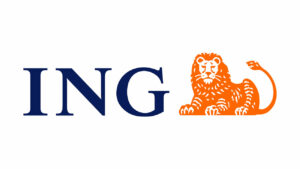By Justine Irish D. Tabile, Reporter
THE PHILIPPINES may benefit from the tariffs the US announced on Monday for some Asian trading partners, with Manila possibly being treated more favorably when its own tariff rate is announced, ING said.
“President Trump’s new tariffs are higher than expected for most Asian economies. Moreover, most countries will face additional tariff rates on transshipments,” Deepali Bhargava, ING regional head of Research for the Asia-Pacific, said in a note issued on July 8.
“The new announcements are silent on Singapore, India, and the Philippines, which might stand to benefit from tariff concessions if negotiations progress favorably,” it added.
On Monday, US President Donald J. Trump said the US sent letters to 14 countries regarding their updated tariff rates, which will take effect on Aug. 1.
These are Japan (25%), South Korea (25%), South Africa (30%), Kazakhstan (25%), Laos (40%), Malaysia (25%), Myanmar (40%), Tunisia (25%), Bosnia and Herzegovina (30%), Indonesia (32%), Bangladesh (35%), Serbia (35%), Cambodia (36%), and Thailand (36%).
“While there is some respite in terms of reciprocal tariffs being pushed out by about three weeks, most countries are now facing higher or similar rates than those announced on Liberation Day,” ING said, referring to the reciprocal tariffs initially announced in Washington in early April.
ING noted that only three of the countries covered in the latest announcement received lower tariffs compared to Liberation Day levels. Many of them range from 35-40%, against the 20% Vietnamese goods are set to be charged after it became one of only two countries to conclude an early trade deal, the other being the UK.
“These tariffs may reflect Trump’s growing frustration with stalled negotiations with certain countries like Japan, South Korea, Thailand, and Malaysia, which all received a higher or unchanged tariff rate,” ING said.
ING sees the announcement as a signal of a broader strategy targeting Asia’s trade links with China.
“The letters indicate that transhipped goods will be subject to higher tariffs, but there’s no mention of the rate that’ll be applied,” it said.
“Interestingly, countries like India, Singapore, and the Philippines, which are not on the new tariff list, may be closer to finalizing trade deals with the US, potentially giving them a competitive edge,” it added.
According to ING, the Philippines’ tariff concessions from the US will be key to growth of its electronics exports, noting that the US accounted for 17% of its total exports last year.
“A significant portion — about 53% — of these exports are electronic products, a sector in which the Philippines competes directly with countries like Vietnam and India for US market share,” ING said.
“Given this context, any reduction or concession on the current 17% reciprocal tariff rate would give the Philippines a competitive edge, particularly in electronics, and strengthen its position against regional peers,” it added.
Asked to comment, Semiconductor and Electronics Industries in the Philippines Foundation, Inc. President Danilo C. Lachica said: “Most of our neighbors have higher reciprocal tariffs except for Singapore at 10%.”
Last month, he said semiconductor and electronics exports have been improving and may match 2023 levels, to about $46 billion by year’s end.
In the first five months, electronics exports increased 0.9% to $17.798 billion, according to preliminary data from the Philippine Statistics Authority.
Electronics Industry Association of the Philippines President Earl Lawrence S. Qua said even though the higher rates imposed on other countries in the region could give the Philippines a competitive edge, the 20% rate Vietnam received from the US remains a concern.
“The bigger the delta is between the Philippines and Vietnam, the better. Vietnam is the country we are compared to the most,” he said via Viber.
When it concluded its trade deal, Vietnam’s 20% rate was much lower than the initial 46% announced in April.
The US-Vietnam deal also set a 40% tariff on transshipped goods, reflecting the use of Vietnam as a point of origin by Chinese manufacturers.
Foreign Buyers Association of the Philippines President Robert M. Young said that if the Philippines is able to secure a tariff lower than its competitors, it will help attract investment from countries with higher tariffs.
“This is a plus point for the Philippines, not so much in selling price competition (as the Philippines will still be on the higher price level), but more on the possibilities of these economies relocating their production to the Philippines, thus creating jobs and livelihood,” he said.
He added that a low US tariff could serve as a “growth engine” for many ailing industries.
Asked which other sectors could benefit from lower tariffs, he said, “other manufactured products that need to import most of their raw materials… needing more advanced machinery and more technology.”
“The food sector can benefit as well, I think … Textiles and wearables will have a breather if we stay at 10%. But with a 17% tariff, it will be uphill to compete,” he said.
After the tariffs announced in early April were suspended, most trading partners were assigned a provisional 10% tariff pending the outcome of negotiations.
“Cambodia and Bangladesh have lower costs than Vietnam. Therefore, we can see that even with their tariffs of 36% and 35%, it remains a challenge for us,” he added.

